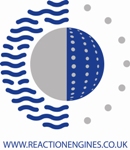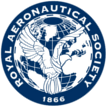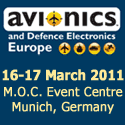In Section : Conferences
The Royal Aeronautical Society produces approximately 25 conferences each year addressing the latest issues and providing the opportunity for professionals working in the same disciplines to meet and discuss their work. Many conferences are backed by a full set of proceedings. The conference programme is generated by the Royal Aeronautical Society’s specialist groups, and supported by industry and academia alike, ensuring that the subject matter is current.
Click on a title from the list below to see the full item.
Added on 25 March 2011 by Emma Bossom
This event is organised by the IMechE and supported by the Aerospace Partnership.
We need to address the trend of achieving high performance goals (such as range, speed, manoeuvrability or low observability) at the expense of life-cycle cost economy. For more information, visit the website
Tags: Aerospace, conferences, event, IMechE
Added on 25 March 2011 by Emma Bossom
This event is organised by the IMechE and supported by the Aerospace Partnership.
This one-day seminar will focus on the challenges often associated with ageing systems. In particular it will examine how the introduction of highly complex interdependent aircraft systems has resulted in the adoption of a systems approach to the maintenance of airwothiness. For more information, visit the website
Tags: Aerospace, conferences, event, IMechE
Added on 25 March 2011 by Emma Bossom
This event is organised by the IMechE and supported by the Aerospace Partnership.
This one-day seminar will examine the latest developments in the military aircraft technology industry, and will feature both the MoD and the manufacturers of military aircrafts, in order to examine how manufacturers and subcontractors can continue to meet procurer’s needs. For more information, visit the website
Tags: Aerospace, conferences, event, IMechE
Added on 22 March 2011 by Emma Bossom
Further details on this event will be available shortly.
Please do contact the Conference & Events Department for more information.
Tags: air transport group, debate, tony lucking
Added on 18 March 2011 by victoria white
Targeting & Delivering Effect for Future Force 2020
The Strategic Defence and Security Review (SDSR), Securing Britain in an Age of Uncertainty, outlines the needs of the UK’s future force structure. This structure, Future Force 2020, will be a highly capable force ready to react, at various levels of intensity, to the complex threat scenarios that may develop in future. It will be a flexible and expeditionary force based on fewer platforms that must be able to deliver effectors with a high degree of accuracy and in a timely manner by air, land or sea.
The threats Future Force 2020 is likely to meet will be challenging. For instance, the threat can use camouflage, concealment and deception measures, presenting targets that could be fleeting in nature. In addition, those threats may evolve more rapidly than our existing development cycles. Moreover, it is anticipated that allied operations will be constrained by rules of engagement where collateral damage is unacceptable politically or legally.
For this transition to become a reality, the challenges of affordability must be met to provide these capability needs. Can we develop or adapt systems, technologies and operations to achieve this?
In order to address these issues, a classified conference is being organised by the Royal Aeronautical Society’s Weapon Systems and Technology Specialist Group. This conference will focus on future operational needs, force structure or system concepts, targeting and weapon effects aligned to Future Force 2020.
Tags: 2020, farnborough, future effectors, future force, qinetiq, royal aeronautical society, SDSR, technology, weapons systems
Added on 18 March 2011 by victoria white
The Future Rotorcraft: Enabling capability through the application of technology
The performance and utility of the ubiquitous edge wise rotary wing configured aircraft has reached a natural limit. The enormous strides taken by the fixed wing community in the development of increasingly efficient, mission focussed, cost effective, green and quick to market solutions have not been matched by the rotary wing community. The barrier to matching the fixed wing community is not concepts or vision: it is the infrastructure of technology and manufacturing techniques that have contrived to hold our community back. Learning lessons from the fixed wing community and adapting them to suit the needs of the rotary wing vehicle is our challenge and the time is now right to take on this challenge and succeed.
The rotary wing vehicle has always provided a niche capability, serving its operators well in situations where no other vehicle could achieve the desired result. It has provided search and rescue as well as emergency medical services that have saved countless lives, it has delivered military effect with great impact, it has supported the development and realisation of off shore energy delivery and it has connected city centres for convenient transportation.
Yet, despite these achievements the effectiveness of the rotary wing configuration has stagnated as one or two tried and tested configurations using the edge-wise rotor have dominated this mode of transport.
The V22 Osprey and BA609 have shown that other configurations are viable and offer significant performance benefits, but so far the tilt rotor has not shown that it can achieve a paradigm shift in respect of time to market and cost of ownership. Recently, others have returned to concepts that may have been tried before but until now were only viable as one off prototypes or design studies that never left the drawing boards.
Enabling technologies related to materials, construction and design tools have matured in the fixed wing community and are beginning to find application to rotary wing solutions. The inevitable and appropriate pressures of environment safety must also be recognised, accepted and converted from complex problem to cost effective solution.
Sponsored by:

Co Sponsors:
Tags: Aerospace, aviation, capabillity, event, helicopter operations, helicopter piloting, pilot, rotorcraft, Rotorcraft Group, royal aeronautical society, technology
Added on 08 March 2011 by Emma Bossom
From Pioneers to Presidents: Celebrating a Century of Women in Flight
Following the success of last year’s RAeS Women in Aerospace & Aviation Conference, the 2011 Networking Event will celebrate a century of women’s acheivements in flight.
Tags: Aerospace, aviation, event, first female pilot, pilot, royal aeronautical society, seminar, spitfire, women, women ferry pilot, women in aerospace, women in aviation, world war two
Added on 08 March 2011 by Emma Bossom
The Wonderful Women Ferry Pilots of the Air Transport Auxiliary
The Royal Aeronautical Society is offering a unique opportunity to meet the few surviving women pilots who ferried every type of military aircraft during World War II, including fighters, huge four-engine bombers as the sole pilot and even the first British jet-engine aeroplane. By the end of the war, ATA pilots had each flown dozens of different aircraft, sometimes several in one day, often never having seen the aeroplane before, far less flown it.
During the seminar, you will hear why the ATA was such a unique organisation, how the women ferry pilots were trained and what they achieved, what an RAF bomber pilot thought of the young women who delivered aircraft to his base, and finally hear from the so-called ‘Spitfire Women’ themselves about their memories of these extraordinary times and their experiences.
At the end of this special seminar, the Royal Aeronautical Society will be making a presentation to the ATA women pilots present to honour their extraordinary achievements.
Tags: Aerospace, aviation, event, first female pilot, pilot, royal aeronautical society, seminar, spitfire, women, women ferry pilot, women in aerospace, women in aviation, world war two
Added on 01 March 2011 by Emma Bossom
For more than half a century now, the International Council of the Aeronautical Sciences (ICAS) has provided for the world’s aerospace engineers, scientists, technologists and managers, the preeminent forum to present and discuss the latest developments in aeronautics. This remarkable apolitical organization founded by Theodore von Karman and his international colleagues, continues to build on its impressive heritage, to be even more relevant to the global aerospace and aviation industries. This world congress staged biennially by ICAS is the key opportunity for those committed to serving those industries to meet, present, discuss and create opportunities that can only be done in such an international environment.
Tags: Aerospace, Australia, Brisbane, Call for Papers, conferences, Engineers Australia, event, ICAS, RAeS Australia Division
Added on 21 February 2011 by gemma crabb
Autumn 2011 Flight Simulation Conference
CALL FOR PAPERS - The Contribution of Flight Simulation to Aviation Safety
Flight Simulation’s broad role in developing, maintaining and enhancing flight safety is well recognised, but have advances in simulation technology and capability been matched by corresponding improvements in the way we conduct training?
Today’s environment is one of increased cockpit automation, airspace congestion, ultra long haul operations, enhanced flight envelope protection and arguably reduced levels of actual manual flying experience in the new generation of flight crews. The levelling off of hitherto falling accident rates, and the changing balance of the causal factors behind them, illustrated by a number of recent highly publicised accidents and incidents, suggest that there are areas for improvement, and that we must continue to strive to further improve our safety record.
The Royal Aeronautical Society Flight Simulation Group has recognised this, and for the past 5 years has overseen several international, multi-disciplinary study groups. The latest one of these is the International Committee for Aviation Training in Extended Envelopes (ICATEE). Its objective is to look at all aspects of live and synthetic training for anticipating, recognising, avoiding, and recovering from unusual attitudes and flight situations, aircraft upset, and loss of control in flight. ICATEE will bring together the best practice in current education, flight instruction and training, updated by the latest research and a rigorous methodology.
Additionally, the IATA International Training and Qualification Initiative (ITQI) promises improvements in flight crew knowledge, skills and attitudes and hence safety through evidence-based competency training regimes. These have far reaching implications on the way flight crew training is conducted, from ab-initio through to type rating and recurrent training, including instructional methods and standards.
While both ICATEE and ITQI are framed around civil large aircraft training and safety requirements, they have the potential to influence military training regimes, which increasingly rely on simulation to maintain standards and mission readiness. At the other end of the spectrum, low cost FSTDs, and new digital interactive media integrated into educational and training simulations, are increasingly being used to address the comparatively poor safety record of General Aviation (GA), both fixed- and rotary-wing. In other aspects of simulator-based training, advances in technology and functionality offer other benefits which can be harnessed to address more specific safety issues.
The conference will principally examine how all these initiatives link together through the use of flight simulation. A significant part of the Conference will be dedicated to the detailed reporting of both the Technical and Training sub-groups of the ICATEE. The sessions will address the approach taken to analyse the training requirements and to develop the rationale for a suitable range of live and simulator-based education, training, and instructional courseware. The Technical subgroup will present its recommendations for data collection and validation in support of enhanced simulator modelling and cueing systems. Papers are also being invited from the IATA ITQI team.
This Royal Aeronautical Society Flight Simulation Conference also invites papers on other safety related issues, in addition to IATA ITQI and ICATEE, such as:
- Simulator technological improvements to meet the safety-driven training and instructional challenges
- Low cost simulation and its potential contribution to safety
- What does GA – fixed wing and helicopters - need from simulation?
- How can flight simulation make a significant reduction in rotary wing accident rates?
- Instructor Qualification and Accreditation
- Human Factors and the Psychological Aspects of Simulator-based training.
- The Live/Synthetic Balance
- Leveraging the next generation in the gaming industry to enhance mission rehearsal training
- New Electronic and Distributed Media, such as games, Social Networks, and the iPad, and their implications for Training and Safety
The dealine for received abstracts is Thursday 21st Apri 2011.
Kindly sponsored by:
Kindly supported by:
Do you know somebody that this event would appeal to? Share it on your favourite services below
Tags: Aviation Safety, civil arena, conferences, Flight Operations, Flight Simulation, group conferences, IATA, ICATEE, ITQI, raes, royal aeronautical society, safety analyses, simulation group
Added on 15 February 2011 by Emma Bossom
An International Approach to Flight Crew Training Standards
The Annual RAeS International Flight Crew Training Conference is well established and highly successful. The 2011 Conference aims to seek solutions on how best to consider flight crew training standards from an international perspective.
Tags: airspace management, Andrew Haines, best practice, CAA, EASA, FAA, fixed wing, Global Professional Certificate, Human Factors, IATA, ICAO, ICATEE, international flight crew training, ITQI, Jules Kneepkins, rotary wing, training, training standards, training standards harmonisation
Added on 21 January 2011 by Royal Aeronautical Society
Aerospace Medicine Symposium: A Selection of Challenging Aeromedical Cases
This medical ‘Grand Round’ will educate aeromedical specialists about the decision-making process in complex aeromedical cases and the need to understand the evidence base underpinning the decisions made. The combination of military and civilian national level experts in aerospace medicine that would not be obtainable from any other source will ensure that aerospace medical practitioners will benefit in their daily practice from attending this Symposium.
Tags: aeromedical decision-making, aerospace medicine, aviation medicine, CAA, civil aviation authority, civilian medicine, conference, flight crew, Gp Capt McLoughlin, medical case history, military medicine, RAF, royal aeronautical society, Royal Air Force, symposium
Added on 12 January 2011 by Royal Aeronautical Society

Taking place on the 13th & 14th April 2011 at the Society’s Headquarters, Aerospace 2011: Funding the Future will focus on Aerospace & Aviation in an Age of Austerity and address how both the civil and defence communities can look to overcome economic uncertainties and grow business in the coming years.
Tags: aerospace 2011, air power, aviation, aviation in an age of austerity, civil, conference, conferences, decision-maker, Defence, defence budget, defence budgets, defence procurement, Flight Simulation Group, funding the future, government, Management Studies, RAeS annual conference, royal aeronautical society, SDSR, society events, technology, Weapons Systems & Technologies
Added on 09 December 2010 by Royal Aeronautical Society
In the first major defence review for many years it is clear that difficult choices must be made about how the UK defends itself against a wide spectrum of potential threats, many of which have a global dimension. Cost could well drive military doctrine in that economic pressures are expected to determine which, if any, potential threats can be countered by unilateral action and which will need combined operations. Strong alliances are necessary to achieve operational sovereignty. Hybrid threats will require agile and adaptive system response.
Tags: air power, boscombe down, conference, conferences, defence budget, defence budgets, defence procurement, Flight Simulation Group, foreign nationals, government, Management Studies, necessary security, royal aeronautical society, salisbury, SDSR, society events, system integrity, term presence, unexpected turns, weapon systems, Weapons Systems & Technologies
Added on 12 November 2010 by Sam Phillips
AEROSPACE FOR EUROPE – MORE THAN JUST FLYING
High Value, Low Carbon, Europes Future
The most important multistakeholder high level roundtable congress in Brussels in December 2010.
This is the aerospace event of the year where decision maker of the most leading European industry, politics and research meet.
Change! Innovation! Vision 2050!
Tags: Aerospace, aviation, Brusells, conferences, Europe, event
Added on 01 November 2010 by Royal Aeronautical Society
Spring 2011 Flight Simulation Conference
The World Outside The Aircraft - Simulating The Operational Environment
Much progress has been made and discussed in previous RAeS Flight Simulation Group Conferences on the simulation of an aircraft and its operational systems for use in flight crew training. International standards have even been drafted in the civil arena defining required levels of simulation fidelity as a function of training tasks.
Tags: air traffic control, awareness skills, civil arena, computer generated forces, conference spring, conferences, Flight Simulation, group conferences, military perspective, royal aeronautical society, safety analyses, sensor simulation, simulation group, substantial focus, threat and error management, traffic, visual aids, visual scenes, Weather
Added on 01 November 2010 by Royal Aeronautical Society
Securing the vision for the next half century
On the 12 April 1961, Vostok 1 lifted off from the Soviet Cosmodrome in Baikonur with cosmonaut Major Yuri Alekseyevich Gagarin on board. Gagarin was the first human being to leave the Earth’s atmosphere, and although his flight was to last only 1 hour 48 minutes, circling the Earth just once, it provoked important political, social, cultural and technical changes, and changed humanity’s perspective of its place on Earth forever.
The fiftieth anniversary of this flight provides an opportunity for a conference combining elements of historical review, assessment of the social and cultural impact of the event in the UK, Russia, and worldwide, and consideration of areas of scientific endeavour of common interest to both Russia and the West. The anniversary occurs as the long term objectives and strategy for human spaceflight are being questioned in both Russia and the West, making this an appropriate moment to revisit that first flight. To this end, a programme of lectures and discussions is being prepared involving significant Russian involvement. The aims of the conference are to:
- review the impact of Gagarin’s flight on space technology and space applications – in the UK and world-wide
- review the social, cultural and political impact of Gagarin’s flight – in the UK and world-wide
- review progress / achievements of the first joint UK-Russia celebratory ISS project agreed with Russian technical experts in July 2010
- discuss the legacy of Gagarin in the context of today’s space programmes – in the UK and world-wide.
Topics to be discussed will include five application areas identified by a joint UK-Russia forum as being of particular interest, namely space medicine and psychology, satellite communication technologies, optics and instrument systems, monitoring and natural disasters, and robotics and autonomous operations. The historical and cultural dimensions will also be given full attention.
Additionally, the conference will provide an opportunity to identify ways in which further unique collaborative ventures can be developed for the future, delivering benefit to both the UK and Russia.
The conference will be of interest to both the scientific and cultural communities. In the scientific and industrial sectors, it will appeal to those in the fields of exploration, human spaceflight, microgravity, space medicine and psychology, robotics, space mechanisms, communication technologies, optics and instruments, monitoring / natural disasters. On the humanities side, it will appeal to those working in culture and the arts (film, museums, galleries etc.), 20th century history, international politics, human destiny, and education (outreach).
There will be a strong networking element to the conference and both formal and informal opportunities for this will be provided.
Full programme to follow soon.
Lead Sponsor: 
Sponsor:
Do you know somebody that this event would appeal to? Share it on your favourite services below
Tags: autonomous operations, conferences, fiftieth anniversary, HRH Prince Michael of Kent, human spaceflight, iss project, Oleg Kotov, royal aeronautical society, Russia, russia forum, russian involvement, satellite communication, Space, space medicine, Vitaly Davidov, vostok 1, YG50, yuri gagarin
Added on 01 November 2010 by Royal Aeronautical Society
Young Members Conference
In a media environment of escalating costs and increased cutbacks, the aviation world needs to maintain its position at the forefront of technological development to avoid stagnation and be able to rise to meet the new challenges.
Tags: aerospace industry, agustawestland, aviation world, bear systems, blue bear, conferences, media environment, members conference, royal aeronautical society, stagnation, step changes, technological development
Added on 01 November 2010 by Royal Aeronautical Society
Classified Conference
Enduring Campaigns are a feature of warfare and in this context mean those operations that require a sustained, long-term presence of a military force in order to assist a country to achieve an acceptable end state.
Tags: conferences, defence budget, defence budgets, foreign nationals, nato operations, necessary security, royal aeronautical society, shrivenham, tamil tiger, term presence, troubles in northern ireland, unexpected turns
Added on 01 November 2010 by Royal Aeronautical Society
Designing Light Aircraft - More Methods and Tools
The Conference will develop the theme successfully launched at the 2009 GAG Conference (Design Methods and Tools for Light Aircraft) which aimed to review design data, design software and affordable tools now available to designers and entrepreneurs.
The 2010 conference will address topics highlighted in the 2009 post-Conference reviews. It will build on the broad overview with further insight into the utility of specific computer tools, and specific aerodynamic, structural and manufacturing issues. Again we have invited speakers who are active in their fields so that presentations are pertinent to the design challenges of today.
Tags: aircraft association, aircraft conceptual design, aircraft design software, composite resin, computer tools, conceptual design phase, conferences, design challenges, general aviation, light aircraft, royal aeronautical society, validation reports
Can't find what you're looking for? Try the Tag Cloud








